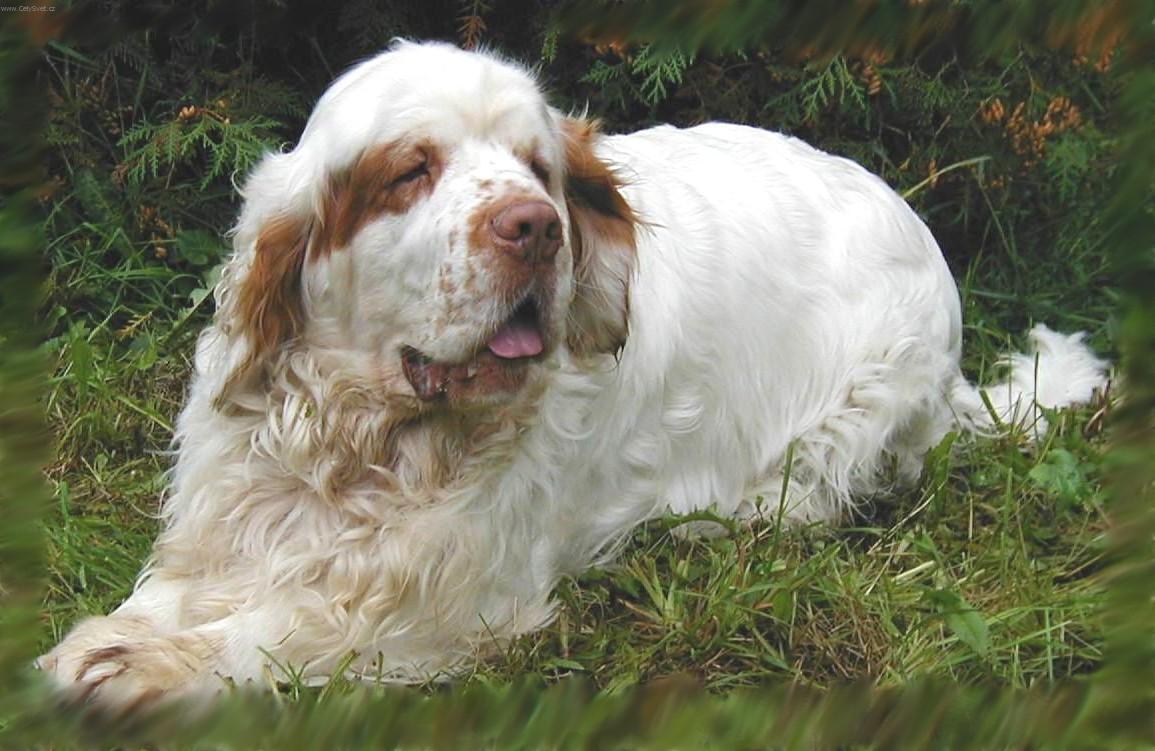
The Breed History
The origins of this breed are obscure. Thought to be French in
origin, possible progenitors include the Basset hound and the
Alpine Spaniel. Some even place St. Bernard dogs in the gene pool
of original contributing breeds. The body type of the Clumber is
somewhat different from the rest of the spaniel group. The breed is
thought to have gone to England to Clumber Park under the care of
the Duke of Newcastle for protection during the French revolution.
Even before the AKC was formally established, registries in North
America accepted Clumbers (1878).
Breeding for Function
This was a valued hunting dog for French and English nobility,
and even some of the British royalty. Though a slow lumbering
gait characterizes the breed, this allowed them to work a day in
the field without tiring. Preferred as a bird dog, they are quiet and
move subtly through dense cover and are used in pack or solo for
tracking, flushing and retrieving.
Physical Characteristics
Height at Withers: female 17-19" (43-48 cm), male 19-20"
(48-51 cm).
Weight: females 55-70 lb (25-32 kg), males 70-85 lb (32-38.5 kg).
Coat: They are double-coated, colored white, and hairs are dense,
straight and soft. Only trimming of the feathering is allowed. Some
light markings (termed orange, lemon) and freckles are acceptable,
but generally fewer markings are considered better.
Longevity: 10-12 years.
Points of Conformation: A very large square head with prominent
forehead and small dorsal furrow, deep stop, fleshy lips with large
flews, and a bit of "haw" or third eyelid prominence are specific to
this spaniel. This is not a true pathologic eversion of the third gland,
but is still referred to as a haw by breeders. Eyes are amber and
the ventral eyelid normally droops somewhat, though the standard
specifies that full ectropion (or entropion) is penalized. Ears are
pendulous and thick leathered with slight feathering. A stocky
well-boned low-built breed, thorax is broad, with a thick long neck
and deep strong hindquarters. Mild throatiness and dewlap are not
faulted. The nose is brown to dark flesh colored. Dewclaws may be
removed. In North America, tails are docked. They move with an
easy, rolling gait and are designed to move through thick cover. The
topline is level and back is long, legs are straight, feet large but not
splayed.
Recognized Behavior Issues and Traits
Reported breed characteristics include: This is known to be an
easy-going, loyal and pleasant dog that enjoys close human contact.
Intelligent and playful, it is of low intrinsic activity when compared
with the other spaniels. Clumbers are aloof with strangers, and
can be a one-man dog if not socialized early. They are average in
trainability and will work hard to please. They tend to drool because
of the flews and are known to snore. They are prone to obesity. They
require only moderate exercise and like the water. Regular coat
grooming is necessary. They are not considered watchdogs.
Normal Physiologic Variations
In Great Britain, 45.2% of Clumber Spaniel litters were delivered by
Cesarean section.
Drug Sensitivities
None reported
Inherited Diseases
Hip Dysplasia: Polygenically inherited trait causing degenerative
joint disease and hip arthritis. OFA reports 45.7% affected. Reported
at a frequency of 17.4% in the Clumber Spaniel Club of America
Health Survey 2001/2002.
Elbow Dysplasia: Polygenically inherited trait causing elbow
arthritis. OFA reports 7.6% affected.
Patella Luxation: Polygenically inherited laxity of patellar
ligaments, causing luxation, lameness, and later degenerative joint
disease. Treat surgically if causing clinical signs. A high incidence is
reported, however too few Clumber Spaniels have been screened by
OFA to determine an accurate frequency.
Pyruvate Dehydrogenase Deficiency/Mitochondrial Myopathy
(PDP1): Autosomal recessive metabolic disorder, where affected dogs
show exercise intolerance, collapse, and severe metabolic acidosis.
Affected dogs have high serum lactate and pyruvate concentrations
and urinary organic acids. Dietary therapy may control clinical signs.
Affected dogs have also been treated with human recombinant PDP1.
One study reported a worldwide spread of the mutation with a 20%
carrier frequency. A genetic test is available.
Disease Predispositions
Entropion: Rolling in of eyelids, often causing corneal irritation
or ulceration. Entropion is reported in 21.55% of Clumber Spaniels
CERF examined by veterinary ophthalmologists between 2000-2005.
Eyelid problems are reported at a frequency of 33.0% in the
Clumber Spaniel Club of America Health Survey 2001/2002.
Allergic Dermatitis (Atopy): Inhalant or food allergy. Presents
with pruritis and pyotraumatic dermatitis (hot spots). Reported at a
frequency of 20.9% in the Clumber Spaniel Club of America Health
Survey 2001/2002.
Otitis Externa: Due to their thick and pendulous ears, Clumber
Spaniels can have more frequent external ear infections. Reported
at a frequency of 20.0% in the Clumber Spaniel Club of America
Health Survey 2001/2002.
Ectropion: A rolling out of the eyelids, that can cause tear
pooling, conjunctivitis, and frequent infection. Can be secondary
to macroblepharon; an abnormally large eyelid opening. Ectropion
is reported in 14.41% and macroblepharon in 6.65% of Clumber
Spaniels CERF examined by veterinary ophthalmologists between
2000-2005. Eyelid problems are reported at a frequency of 33.0% in
the Clumber Spaniel Club of America Health Survey 2001/2002.
Intervertebral Disc Disease (IVDD): Serious neurological condition
where disk degeneration and rupture into spinal nerves and the
spinal cord causes pain and possible paralysis. Requires immediate
veterinary care. Reported at a frequency of 13.0% in the Clumber
Spaniel Club of America Health Survey 2001/2002.
Retinal Dysplasia: Retinal folds, geographic, and generalized retinal
dysplasia with detachment are recognized in the breed. Reported
in 7.02% of Clumber Spaniels CERF examined by veterinary
ophthalmologists between 2000-2005.
Distichiasis: Abnormally placed eyelashes that irritate the cornea
and conjunctiva. Can cause secondary corneal ulceration. Identified
in 6.40% of Clumber Spaniels CERF examined by veterinary
ophthalmologists between 2000-2005.
Cataracts: Posterior cortex intermediate and anterior cortex
punctate cataracts predominate in the breed. Onset 6-18 months of
age. Unknown mode of inheritance. Reported in 5.32% of Clumber
Spaniels examined at veterinary teaching hospitals. Identified
in 4.31% of Clumber Spaniels CERF examined by veterinary
ophthalmologists between 2000-2005. Reported at a frequency
of 5.2% (mostly punctate) in the Clumber Spaniel Club of America
Health Survey 2001/2002. CERF does not recommend breeding any
Clumber Spaniel with a cataract.
Hypothyroidism: Inherited autoimmune thyroiditis. 4.5% positive for
thyroid auto-antibodies based on testing at Michigan State University.
(Ave. for all breeds is 7.5%). Reported at a frequency of 13.9% in the
Clumber Spaniel Club of America Health Survey 2001/2002.
Anasarca (Lethal Congenital Edema): Puppies are born dead and
edematous. Can also be associated with cleft palate. Reported at a
frequency of 4.4% in the Clumber Spaniel Club of America Health
Survey 2001/2002.
Cryptorchidism (Retained Testicles): Can be unilateral or bilateral.
This is a sex-limited disorder with an unknown mode of inheritance.
Reported at a frequency of 3.5% in the Clumber Spaniel Club of
America Health Survey 2001/2002.
Inflammatory/Irritable Bowel Disease (IBD): Presents with
chronic vomiting, diarrhea, and/or weight loss. Affected dogs can
usually be controlled with diet and/or medications. Reported at a
frequency of 3.5% in the Clumber Spaniel Club of America Health
Survey 2001/2002.
Persistent Pupillary Membranes: Strands of fetal remnant
connecting; iris to iris, cornea, lens, or involving sheets of tissue. The
later three forms can impair vision, and dogs affected with these
forms should not be bred. Identified in 1.85% of Clumber Spaniels
CERF examined by veterinary ophthalmologists between 2000-2005.
Cardiomyopathy, Epilepsy, Immune Mediated Hemolytic Anemia,
Oligodontia, Panosteitis, Portosystemic Shunt, Prognathism,
Progressive Retinal Atrophy and Wry Mouth are reported.
Isolated Case Studies
None reported
Genetic Tests
Tests of Genotype: Direct genetic test for PDP1 is available at the
University of Missouri and the Animal Health Trust.
Tests of Phenotype: CHIC Certification: Required testing includes
hip and elbow radiographs, CERF eye examination, and genetic test
for PDP1.
Recommend patella examination, thyroid profile including
autoantibodies and cardiac evaluation.
Miscellaneous
- Breed name synonyms: Clumber
- Registries: AKC, CKC, UKC, KCGB (Kennel Club of Great Britain),
ANKC (Australian National Kennel Club), NKC (National Kennel Club)
- AKC rank (year 2008): 177 (280 dogs registered)
- Internet resources: Clumber Spaniel Club of America:
www.clumbers.org
Clumber Spaniel Club of Canada: http://clumbercanada.webs.com/
The Clumber Spaniel Club (UK): www.clumberspanielclub.co.uk
Clumber Spaniel Health Foundation: www.clumberhealth.org
Photo Gallery of Breed - Clumber Spaniel - Dog Breed
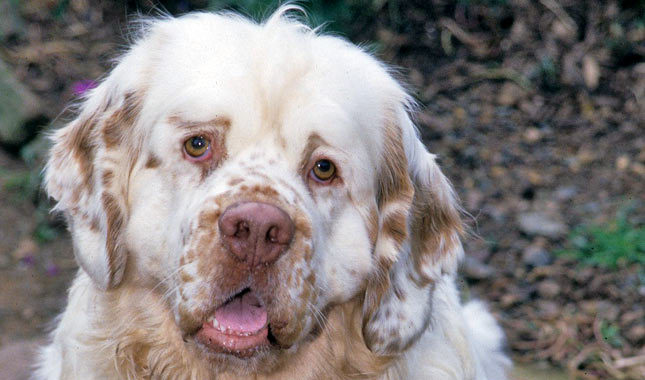
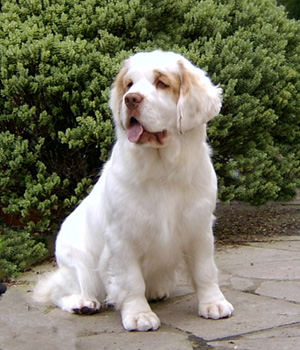

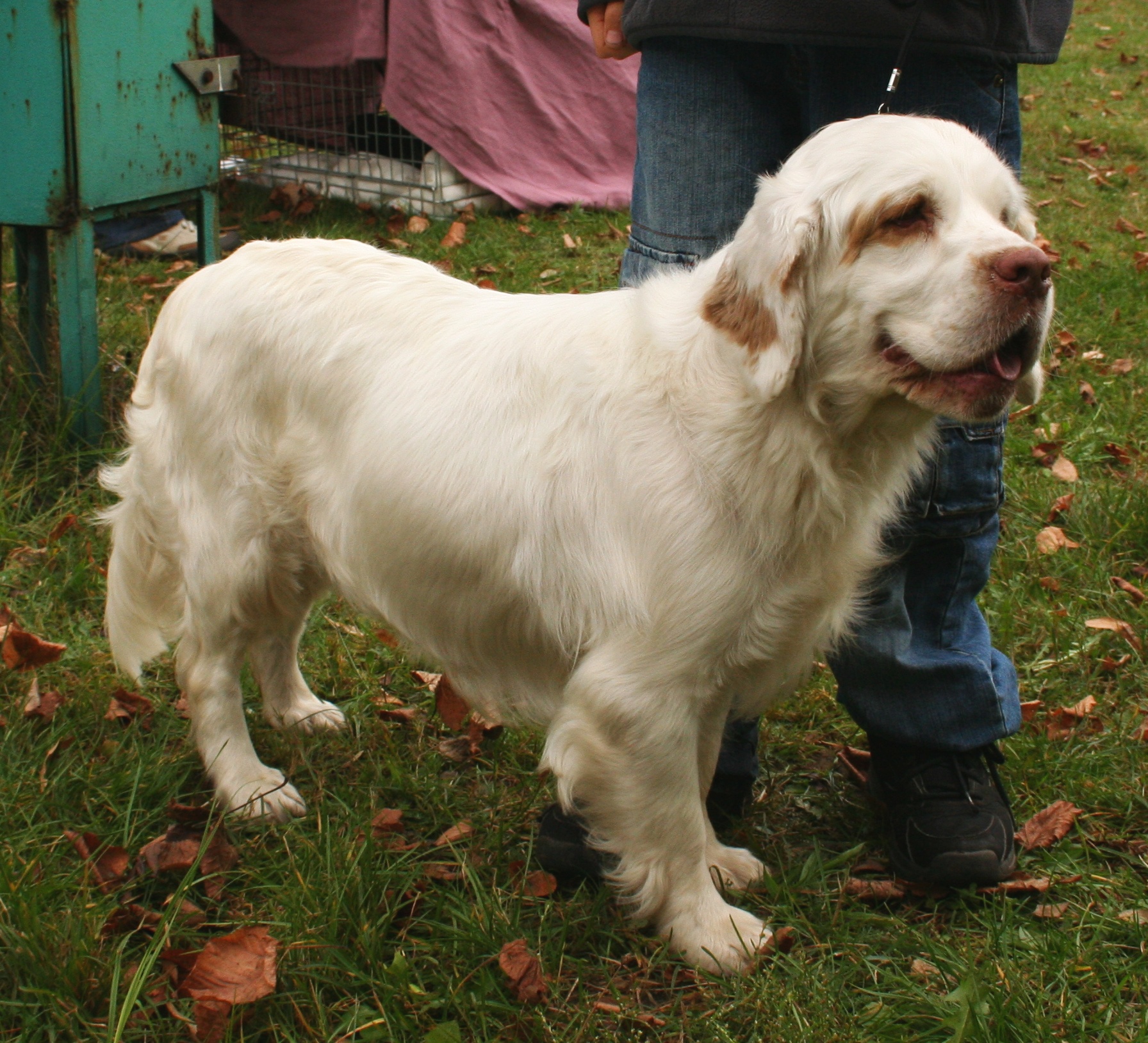
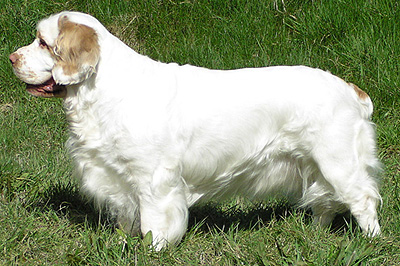


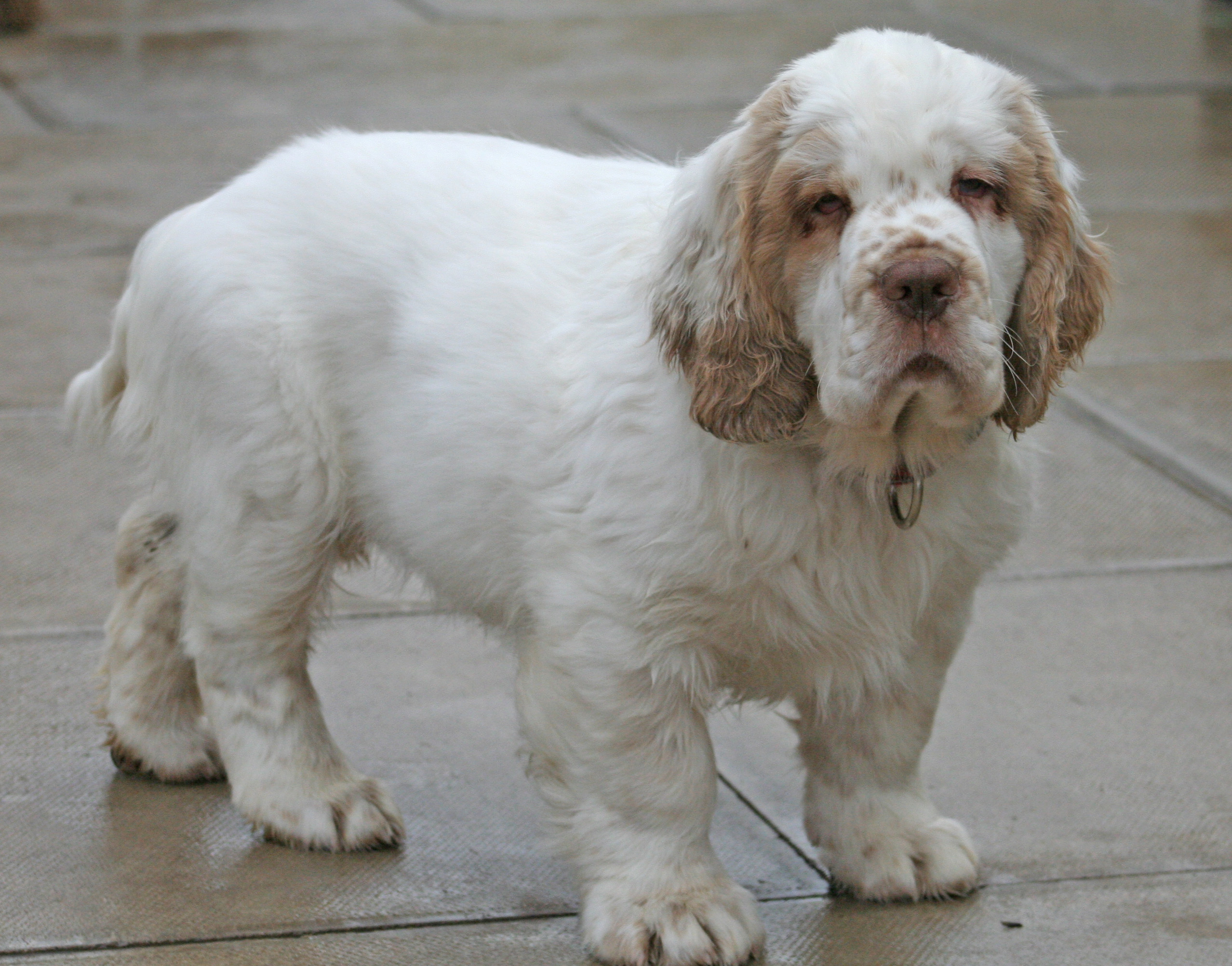
 Animalia Life
Animalia Life